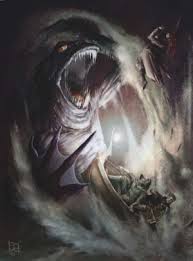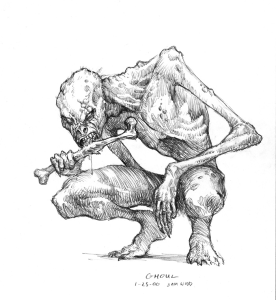I’m running all seven Wilderland Adventures with my group of 7 players. You can also read reviews of other AiME products on this blog. These adventure blog-posts are part review and part suggestions for Loremasters on how to run or adjust the adventure, based on my experience of running it. And to provide context for those two things, I will also describe what happened during the adventure. Art is copyright Cubicle 7 and pulled from their material.

Our second adventure had 5-6 players present for the two sessions. The group includes a dunedaìn warrior, a men of minas tirith scholar, a hobbit treasure hunter, a hobbit warrior, a woodman wanderer, a dwarf slayer and a dwarf warden (two cousins).
Of Leaves and Stewed Hobbits is a relatively light-hearted adventure which has a tone closer to the Hobbit than to the Lord of the Rings. The adventure is a rescue mission. A hobbit couple have opened the Easterly Inn, close to the Forest Gate of Mirkwood. The brother of the proprietor, Dindy, was sent back to the Shire, to purchase supplies, but his small caravan is running late. The characters are sent to get him, if he is in trouble.
How it played out
Session 3
We had completed the arrival to the Easternly Inn in session 2, had a Fellowship phase, and played through the hook of the adventure. That meant we were ready for the journey when we sat down for session 3.

The journey itself was relatively uneventful. They got shelter from a thunderstorm, was blessed by a wandering Saruman and avoided a warg lair. They pass the Old Ford and go up to the foothills of the Misty Mountains.
The first scripted encounter was in the ruins of Haycombe, and old mannish town. When they spend the night, a shade captured the sleeping hobbit treasure hunter, but was then discovered by the dwarf warden on watch, and they defeated the shade. The caught hobbit found himself captured in the mud of a nearby riverbed, but wrestled free, and later found the treasure of the shade.
Up in the pass they come upon the caravan at an old ringfort. The caravan is beset by goblins and orcs, and they help defend it. They fight heroically, and only the scholar goes down in the final round of combat. At the end Dindy is kidnapped by the goblins and dragged off into the mountain.
Session 4
We begin the session by having a short rest, before pursuing the goblins into the caves. I do the goblin song, as best I can, and then they have a harrowing trip through the dark. They get a little lost, but avoid any serious encounters, before they find the goblin hideout.
They sneak up on the drunk guards, kill them, and find Dindy peeling potatoes. They help him out, kill the next guards, sneak down to the stored alcohol and spike the drinks of the goblins.
They get roaring drunk, and, disguised as goblins, the two hobbits steal the key to Dindy’s manacles, as well as the goblin chief’s silver mug. Then they rescue Dindy, and travel home to the Easterly Inn.
Note: As the goblin cave only took a couple of hours, we started on the next adventure during the session.
How was the adventure?
It was a very fun, dramatic and entertaining adventure. The mood is very close to the style of the Hobbit, and it seemed like my players enjoyed it a lot. They particularly noticed that the encounters are very well thought through and serve a purpose.
I think it is a well-paced adventure, with a natural climax in both parts of the adventure.
The defense of the caravan is classic Tolkien and is the first climax of the story. The second climax is the rescue of Dindy. You could argue that there is a difference in mood and tone between part one and two that might throw some people off a bit.
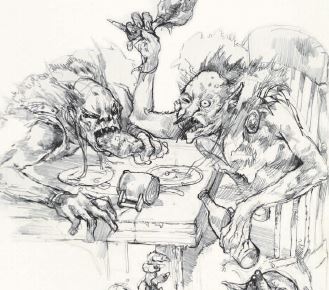
The wicked light-heartedness of the goblin caves was a point where I think the players really felt they were playing in Tolkien’s world.
The goblin song is quite clever, as it really sets the tone for the second part of the adventure, because it is different from the serious battle defending the caravan. Dindy and the goblins were very fun to role-play, and all in all, we had a great time.
The total play time was probably around 6 hours. So, a little under two whole sessions.
My biggest disappointment was that the ringfort wasn’t among the colour maps for the adventure. I don’t understand why it wasn’t included, as it is such a tactical encounter.
The goblin cave worked well overall. The treasure hunter was puzzled, though, when I told him he was unable to pick the lock on the chains. Dindy has obviously been placed at the entrance of the cave for the setup of the adventure to work smoothly, even if it isn’t entirely logical. I could have let him roll, but if he rolled a natural 20, it would also have been disappointing when he still would fail.
Running the adventure
What did I change, or should I have changed?
Not much.
I used the Rhovanion Region Guide to flesh out the stop at the Old Ford. That gave a bit of colour.
The battle at the ringfort was the only place, where I had to revise things on the fly. The One Ring, which was the original system, is more story focused, compared to D&D, and my D&D players, who are more tactical, needed a slightly different approach.

My player’s expect more information to defend their position in the best way possible. They expect an number of opponents and an exact range they could begin firing at , to reduce their hit points as much as possible. That is very reasonable, as several players have made ‘ranged builds’, and it would be unfair to them, not to let them gain an advantage from that focus, to reduce the danger of the encounter. But the encounter isn’t built for that, so I added a couple of orcs for balance.
I had also given the dunedaìn player a premonition of this battle (due to the Foresight of Kindred virtue), and he guessed that goblins would be coming from the side. Even without hints, your players might plan for guarding the flanks. But in the adventure the goblins just suddenly appear. The character on guard did perception checks to spot them, and I had to add how many rounds they would need to climb the hillside (3 I think it was), and I added an extra goblin, as I expected a couple to die on the way up.
The adventure says that the leader attacks after the first orc soldier goes down. But that is too soon. The orcs had a hard time getting past the entry point, so the leader and a couple of extra orcs came when most of the first wave was gone.
I had planned on having the players run the NPCs against a smaller group of orcs, but time was against me, and I discarded that idea. I do think it would have made the battle even more interesting, as they characters might have needed to reinforce a failing second front. It also often creates a closer connection to the NPCs if the player’s have run them in combat.
Tricky Night-Wight encounter
The encounter with the Night-Wight could be tricky for smaller groups. There is a risk of a TPK. The shade has about 50% chance to sneak in and kidnap characters. With four players there is a real chance that it will get two or even three players. If one or two characters face this shade at level 2, they could easily get killed, before the other characters awake and break free.
With six players it wasn’t a big risk for me. But watch out, if you have a small group!
Random events/encounters
The journey events worked well (again). I really love that system.
They also added six potential random events for the journey under the mountain, and I didn’t need any of them, when I followed the adventure.
In hindsight, I should have used one or two.
There were two challenges though: the characters were already under a lot of pressure (they only got a short rest at the ringfort) and the journey itself caused 1 exhaustion level for the two scouts of the group.
Furthermore, the events are quite dangerous and damaging.
I should have reduced the consequences of the encounters, and had them run into a couple.
All in all, a very entertaining adventure, and I can’t wait to run the next session tomorrow!
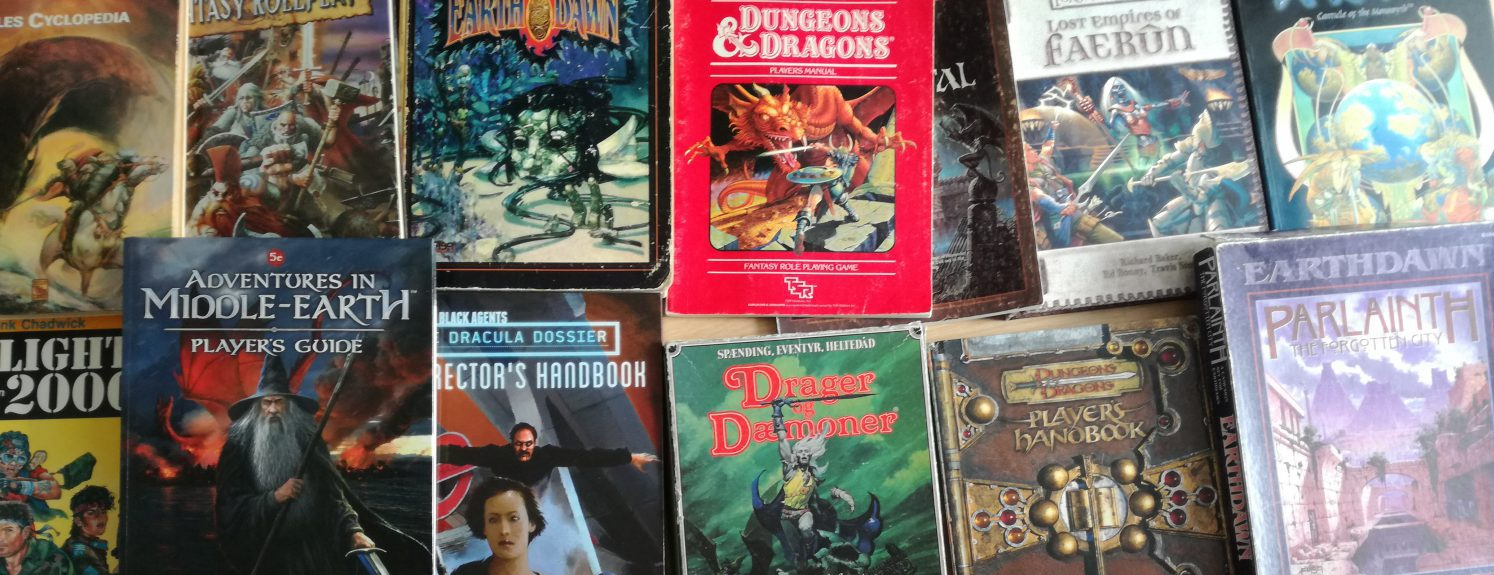


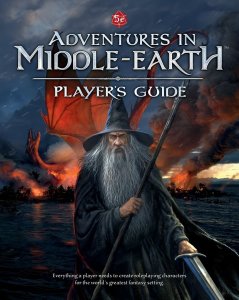












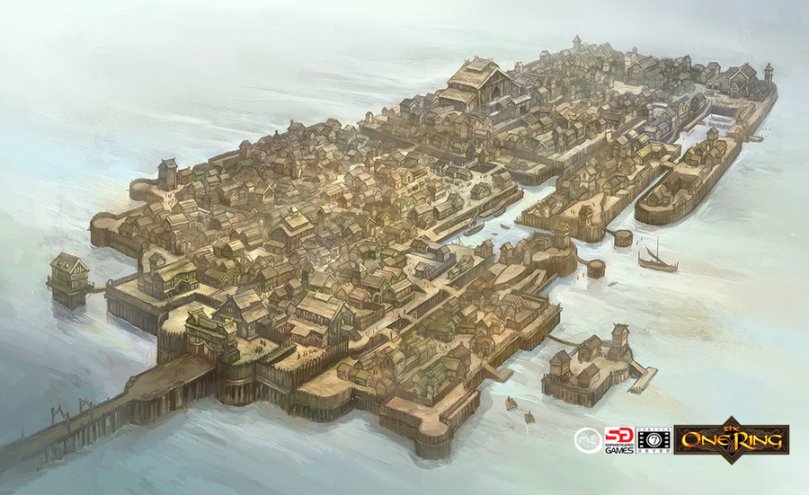 The first large section is on the setting. It has a few pages on the Wilderlands and about 10 pages on Lake-town, which is the default starting location for the game. It also has a useful timeline, which has both ancient history and future events included.
The first large section is on the setting. It has a few pages on the Wilderlands and about 10 pages on Lake-town, which is the default starting location for the game. It also has a useful timeline, which has both ancient history and future events included.
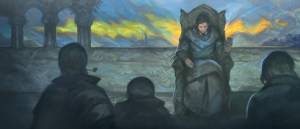
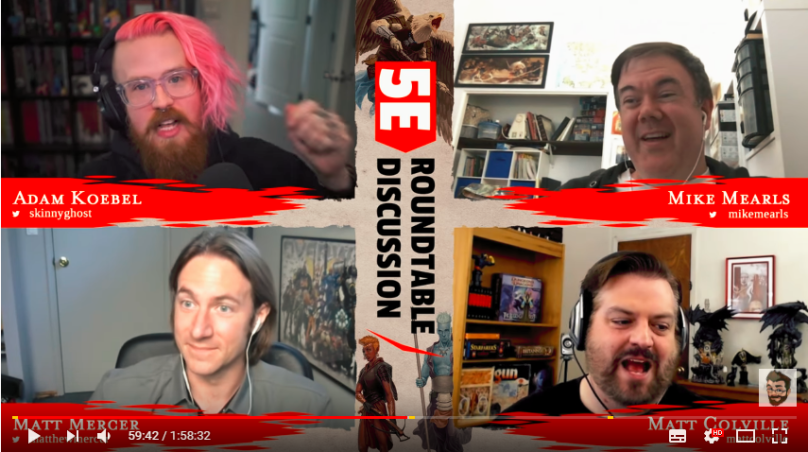







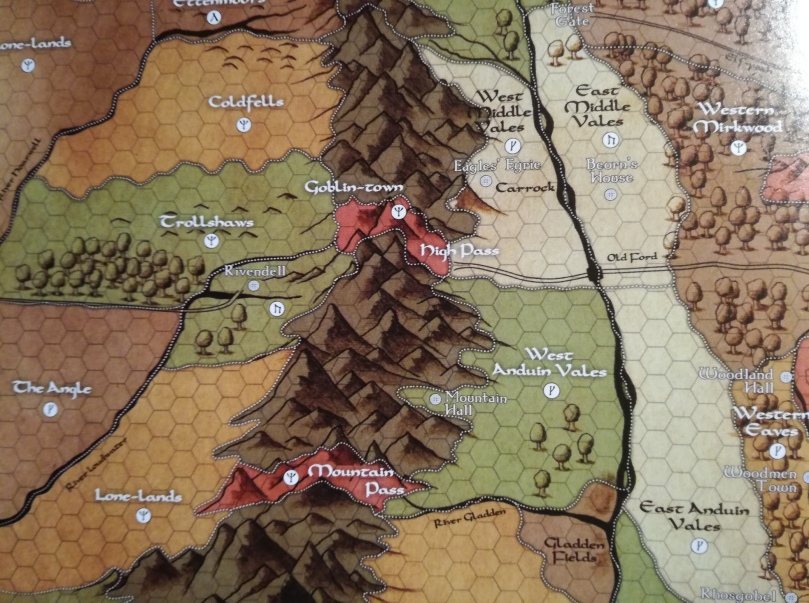 The most significant ‘new thing’ in the game, in my view, is a system for journeys. I won’t go into the detail of the rules, but whenever the group needs to travel to an adventure location, they need to use the journey rules, in place of the regular overland travel and random encounters described in D&D.
The most significant ‘new thing’ in the game, in my view, is a system for journeys. I won’t go into the detail of the rules, but whenever the group needs to travel to an adventure location, they need to use the journey rules, in place of the regular overland travel and random encounters described in D&D.



